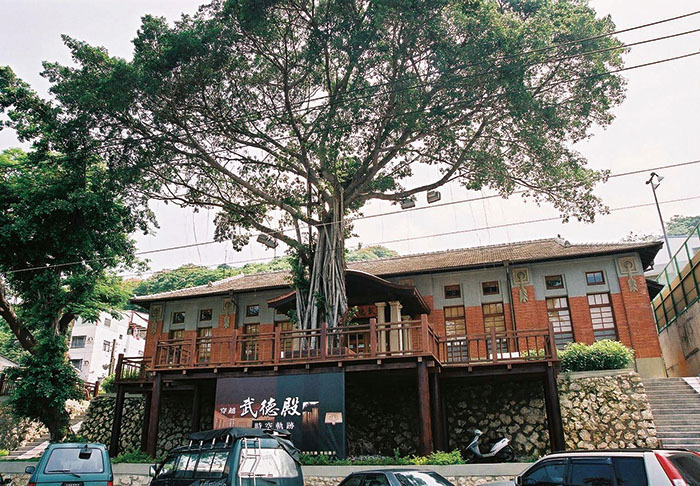Travel through Vintage Photographs
The Glory Days of Hamasen
◎English translation: Hou Ya-ting ◎Photo by Pao Chung-hui
The construction of Hamasen ushered in Kaohsiung's modernization. Hamasen is now a southern part of the city's Gushan District, but this area was once known as a land of opportunity. It still boasts a well-planned grid of streets, and was formerly a thriving commercial area with many banks, restaurants, and hotels, as well as Kaohsiung's original railway station. The sights of Hamasen offer glimpses into the area's glorious past. Ms. Guo Yan-ti points out a group photo in one of her grandmother's albums. It was taken around the Lunar New Year. Her grandmother used to work at a bank in Yancheng District, on a site which later fell vacant. The building has since been repurposed as a restaurant.

As a Hamasen resident, Ms. Guo is able to recommend many historic sights in the neighborhood, such as Wude Martial Arts Center, Kaohsiung Daitian Temple, the Red Cross Center for Children, and Sinbin Old Street. Leafing through her grandmother's photos, we see the scenery around Gushan Ferry Station, Sinbin Old Street, and Sizihwan Beach. Ms. Guo points at a beach photo taken near Shoushan, in which her grandmother and her friends are dressed in swimming costumes, and accompanied by many children who splash around in the surf. Two ladies dressed in kimonos and carrying cute little parasols also appear in the photos, and a bamboo raft is set on the beach behind them. Ms. Guo recalls that, when she was young, Sizihwan Bay was a restricted area. Residents had to sneak on to the beach if they wished to take a dip in its refreshing waters. The area later became National Sun Yat-sen University and Sizihwan Bay.
Standing on the levee at Sizihwan, looking at Sizihwan Bay and Shoushan, while referring to the vintage photograph, we see how those bygone scenes have been replaced by what is now in front of our eyes. Such historic images enable the imagination to travel through the past from a present-day point of view. These old, yellowing photographs close the distance, revealing family stories which are part of the city's common memories.
重遊老照片的舊時光 ─ 哈瑪星的風華
◎文/盧昱瑞 ◎攝影/鮑忠暉
哈瑪星是高雄現代都市規劃的源頭,有棋盤式的街道、設立多家金融機構、有高雄車站和許多餐館旅社,還有漁港及魚市場。「從老地圖上的眾多商號來看,其實並不難想像二十世紀初哈瑪星的繁盛風華。這張老照片收藏在我祖母的相簿裡,日治時期她曾在臺灣商工銀行高雄支店工作,相簿裡還有新年的全體員工合影。同樣的街角,今昔變化很大,我還看過它是第一銀行的樣子,後來變成空屋,現在成了餐館。」哈瑪星有許多歷史景點很值得走訪,如:武德殿、代天宮、愛國婦人會館及新濱町老街廓,在郭姐祖母的老相簿裡,仍收藏著鼓山輪渡站、新濱街廓和西子灣海水浴場的風景。「這張『壽海水浴場』就很少見,我祖母和她的好姐妹們穿著泳裝在海邊玩水,還帶著許多小朋友,有兩位女士穿和服撐著可愛的小陽傘,背後還停靠著一艘竹筏。」但郭姐說,其實她小時候西子灣還是軍管禁區,一般民眾僅能偷溜到海邊戲水,後來蓋了中山大學,也有了現在的西子灣海水浴場。
今日站在堤防上眺望西子灣沙灘和打狗山,重新凝視昔日海水浴場的舊照片,不知過往的人們會如何看待今日的風景,但逝者已矣;從這些偶然被保存與發現的舊照片,至少可以再次確立一段家族歷史的緣由,也讓我們對過往有更具體的想像及能見性。